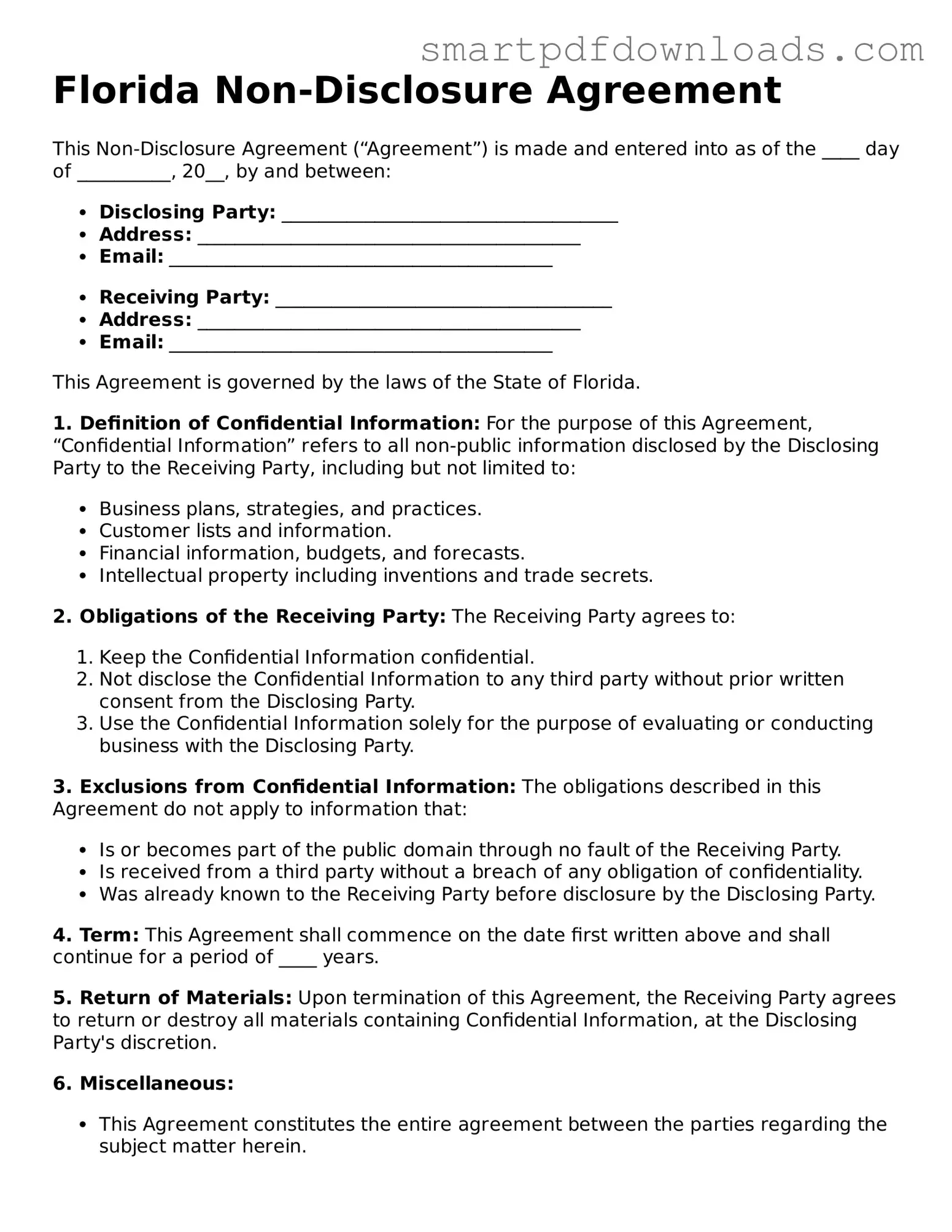Florida Non-Disclosure Agreement
This Non-Disclosure Agreement (“Agreement”) is made and entered into as of the ____ day of __________, 20__, by and between:
- Disclosing Party: ____________________________________
- Address: _________________________________________
- Email: _________________________________________
- Receiving Party: ____________________________________
- Address: _________________________________________
- Email: _________________________________________
This Agreement is governed by the laws of the State of Florida.
1. Definition of Confidential Information: For the purpose of this Agreement, “Confidential Information” refers to all non-public information disclosed by the Disclosing Party to the Receiving Party, including but not limited to:
- Business plans, strategies, and practices.
- Customer lists and information.
- Financial information, budgets, and forecasts.
- Intellectual property including inventions and trade secrets.
2. Obligations of the Receiving Party: The Receiving Party agrees to:
- Keep the Confidential Information confidential.
- Not disclose the Confidential Information to any third party without prior written consent from the Disclosing Party.
- Use the Confidential Information solely for the purpose of evaluating or conducting business with the Disclosing Party.
3. Exclusions from Confidential Information: The obligations described in this Agreement do not apply to information that:
- Is or becomes part of the public domain through no fault of the Receiving Party.
- Is received from a third party without a breach of any obligation of confidentiality.
- Was already known to the Receiving Party before disclosure by the Disclosing Party.
4. Term: This Agreement shall commence on the date first written above and shall continue for a period of ____ years.
5. Return of Materials: Upon termination of this Agreement, the Receiving Party agrees to return or destroy all materials containing Confidential Information, at the Disclosing Party's discretion.
6. Miscellaneous:
- This Agreement constitutes the entire agreement between the parties regarding the subject matter herein.
- No amendment or modification of this Agreement shall be valid unless in writing and signed by both parties.
- If any provision of this Agreement is found to be unenforceable, the remaining provisions shall remain in effect.
IN WITNESS WHEREOF, the parties have executed this Non-Disclosure Agreement as of the date first above written.
Disclosing Party: ________________________________
Signature: ______________________________________
Date: _________________________________________
Receiving Party: ________________________________
Signature: ______________________________________
Date: _________________________________________
